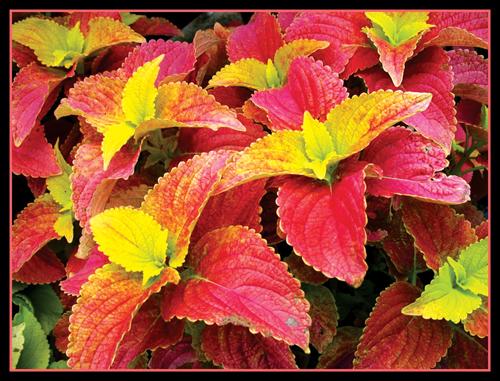C is for colorful palette – Phuket Gardening

PHUKET: Both cordylines and crotons have been considered fairly recently in these columns. Time only for a whistle-stop tour. Suffice to say that they are two of the first foliage plants most tropical gardeners would choose, both for their dramatic and permanent leaf color and their trim form, which means that they can be put in large groups, lined up as a mid-border plant or planted for contrast amid conventional greenery.
In both cases, the leaves issue from a single woody stem and tend to grow most vigorously at the top, especially in dry conditions, in an almost palm-like manner.
Cordylines have been enthusiastically hybridized here in Thailand. Attractive recent forms have broad pointed leaves of an almost luminous magenta, though there are varieties with green leaves edged with crimson, and others with dull, purplish-bronze foliage, or even grassy, pinkish leaves.
They are rhizotomous and will grow well in pots filled with a loam-based compost, but should not be exposed to the full glare of the tropic sun lest the leaves fade. Pick off the unsightly dead ones anyway. No pruning is required, though leggy plants can be chopped in half. The re-planted top should root, and the bare stem should produce new foliage.
Most crotons or codiaeums have even broader, glossy, leathery evergreen leaves, though there are varieties such as “banana” with narrow leaves. Many are characterized by pronounced veining, usually in a contrasting hue. One leaf may have three colors, for example: green suffused with deep pink, and yellow or red veins. “Gold dust” has yellow flecks on green foliage.
Codiaeums start life as a single-stemmed plant, but given time and the right conditions – full sun and a moist but well drained soil – they will assume a clumpy shape and can develop into a small tree. Young cuttings will root in water. Good as a container plant, they have graced western drawing rooms for well over a century.
Another foliage plant popular in Thailand is the coleus (solemostemon), hence the presence in nurseries of beautifully patterned potted specimens in a wide range of colors. Normally the leaves have two or more dramatically contrasting hues, for example: deep purple edged with green; yellow or a luminous green veined with crimson. The foliage is paper-thin and nettle-like and the stems are soft and brittle.
In fact the coleus is not entirely at home here, preferring temperatures in the seventies or eighties rather than the nineties of Phuket. A position in filtered sunlight and well-drained soil will, however,
fit the bill.
If you want the best of both worlds, you could try the costus or spiral ginger. Not only does it possess glossy, spear-shaped leaves which are grouped around the upper parts of the stems, but in the case of C. curvibractus, unusual bracts which form bright red cones above the foliage. It is frequently employed as a border specimen and used in massed plantings (such as in the Phuket Botanic Garden), where the effect can be spectacular. However, in common with all gingers, it will need plenty of moisture and a position out of direct sunlight.
If deprived of water, it will soon die back and lose its leaves. A less common relative, the crape ginger (C. spicatus), has larger purple cones from which emerge white flowers with a reddish throat. Variegatus has vivid white and green striped foliage.
Coincidentally , all these “C” plants will survive the container experience. I would not recommend that you plant any member of the zingiber family in a pot, but I know a gardener who does and successfully. As for cordylines, coleus and crotons, they are naturals: they will not only thrive in such an environment, but will add a dash of permanent color to your collection of potted plants.
Tip of the week – Leafy logic
Evaporation through the leaves is essential if water from the soil, via the roots and the plant’s capillaries or zylem, is to reach the stems and foliage. This transpiration also helps to cool down plants, especially in tropical climes, as well as changing osmotic pressure in the roots.
As a general rule, the bigger the leaf area, the greater the potential loss of moisture through evaporation. A large tree may lose thousands of liters of water in a day. The rate of evaporation depends on many external factors: atmospheric humidity; heat (most crucial); direct sunlight or wind.
But the plant will have its own procedures or characteristics to help reduce water loss – for example, closing some of these pores (stomata) or even shedding excess leaves (champaca). Thick, leathery leaves (rubber vine, dillenia, plumeria) usually have fewer stomata and enable the plant to better withstand dry conditions.
If you have a question, or a garden that you would like featured, you can email the author here.
Keep checking our online Phuket Lifestyle pages, follow us on Twitter @phuketgazette or join our Facebook fan page for regular gardening features and tips.
— Patrick Campbell
Latest Thailand News
Follow The Thaiger on Google News:


























